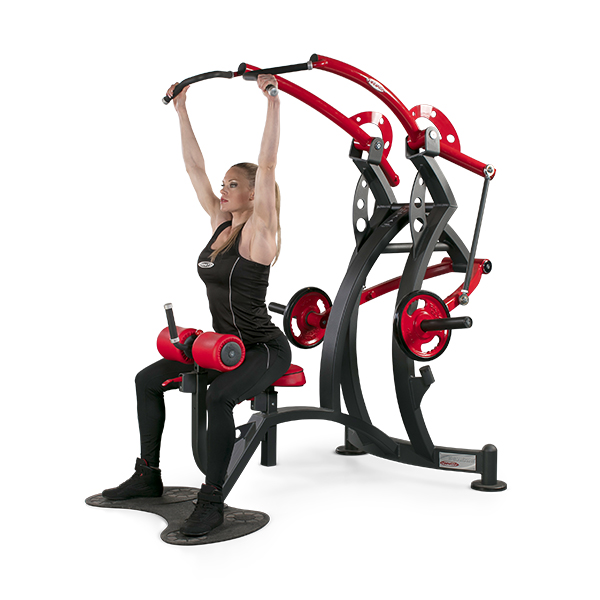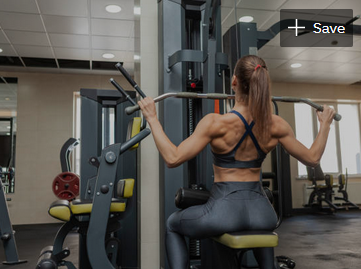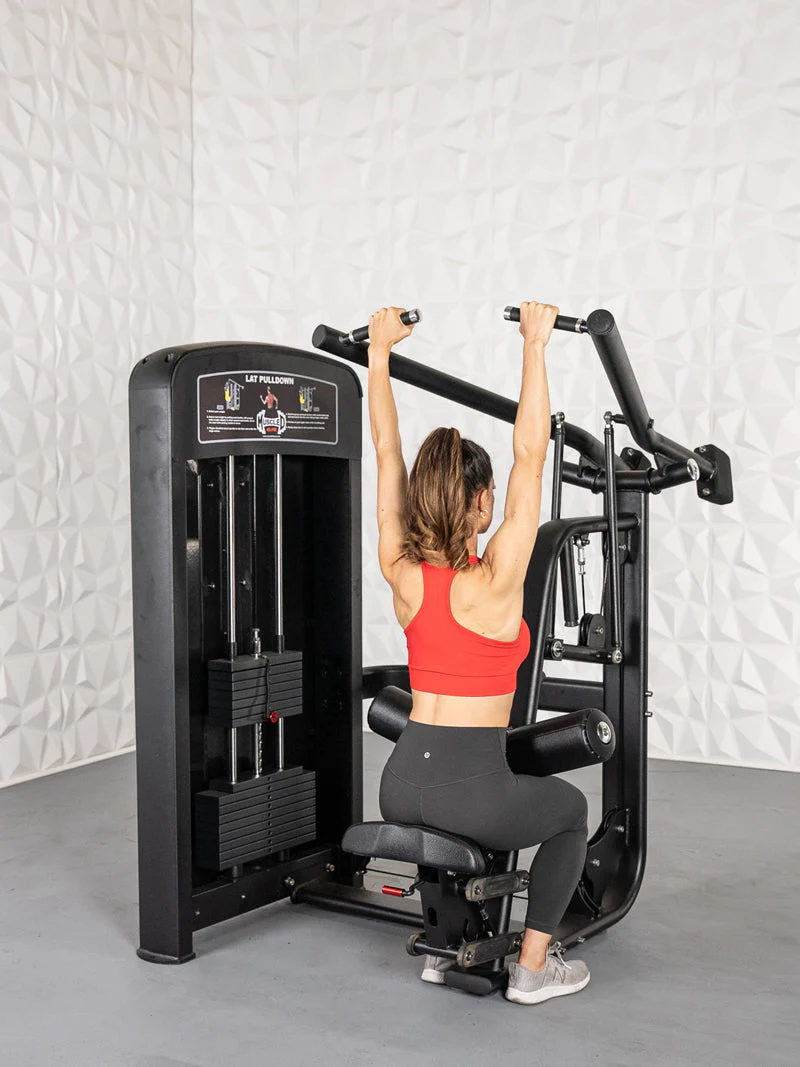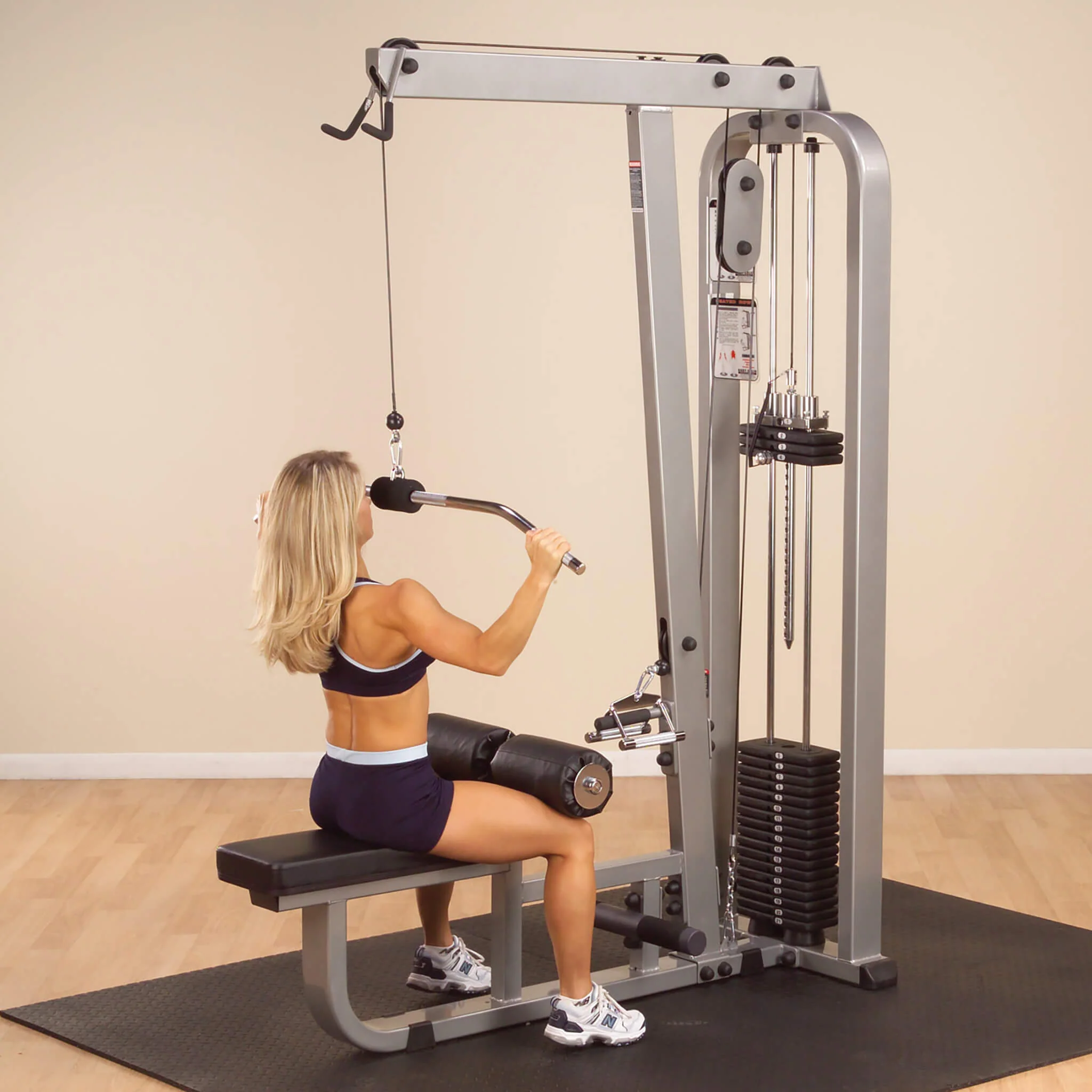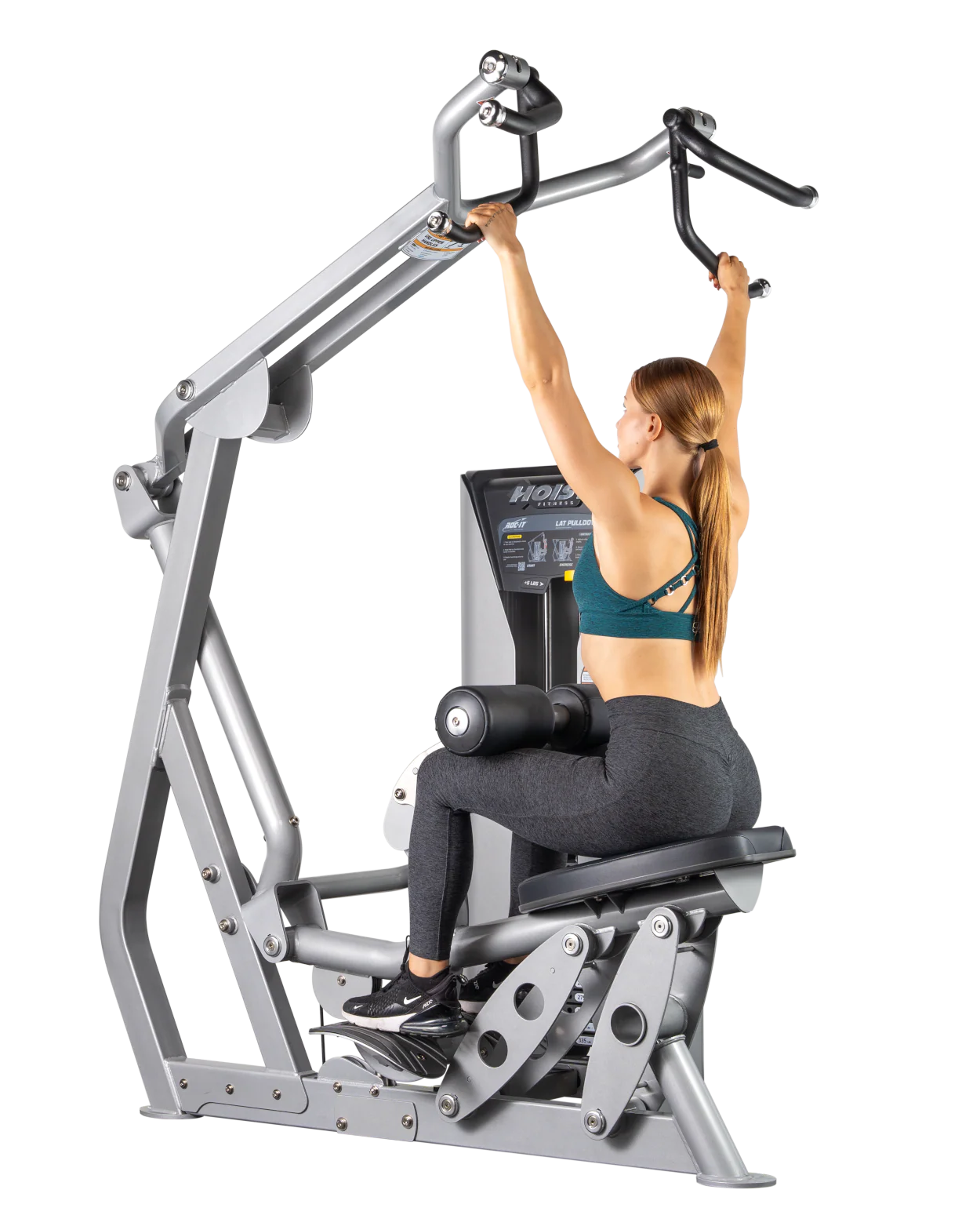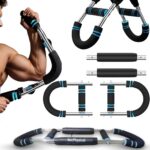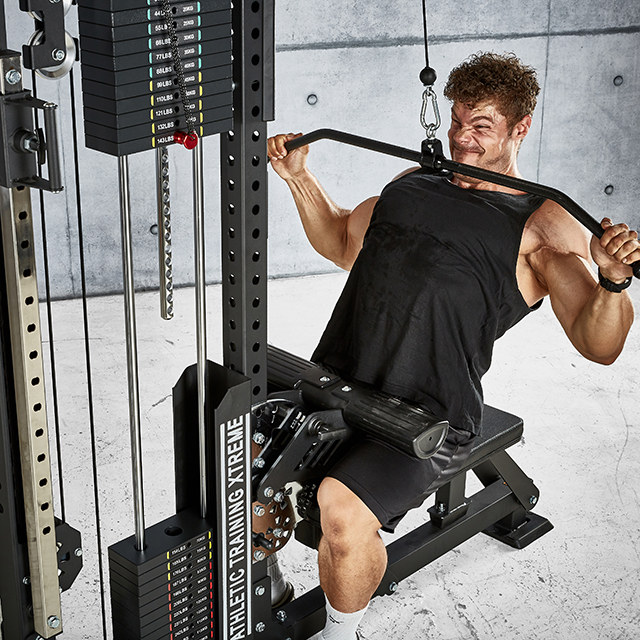By Jodie Carter, Certified Personal Trainer (REPS Level 3) & Home Gym Specialist
Starting a new fitness routine without a clear plan is like trying to navigate London without a map – you might eventually reach your destination, but you’ll waste time, energy, and likely become frustrated along the way. This is especially true when it comes to building back strength with lat pulldown machines, where random workouts often lead to plateaus, poor form, and disappointing results.
A structured 8-week program eliminates the guesswork and provides a proven roadmap for transforming your back from weak and underdeveloped to strong and defined. This isn’t just another collection of exercises thrown together – it’s a scientifically-based progression that addresses the specific needs of beginners while building toward more advanced training techniques.
Over the next eight weeks, you’ll systematically develop proper movement patterns, build impressive strength, and create the foundation for a lifetime of effective back training. Each week builds upon the previous one, ensuring steady progress while preventing the overuse injuries that often derail beginners who try to do too much too soon.
Before You Start: Essential Preparation
Success in any fitness program begins with proper preparation. Before diving into our complete beginners guide to lat pulldown machines, taking time to assess your current situation and establish clear parameters will dramatically improve your results and reduce the risk of setbacks.
Assessing Your Current Fitness Level
Understanding where you’re starting from helps set realistic expectations and ensures the program meets your specific needs.
Basic fitness assessment:
- Cardiovascular baseline: Can you walk briskly for 10 minutes without becoming breathless?
- Upper body strength: Can you perform 10 wall push-ups with proper form?
- Back mobility: Can you reach overhead and touch your hands together above your head?
- Core stability: Can you hold a plank position for 30 seconds?
Lat pulldown-specific assessment:
- Starting weight determination: Begin with a weight that allows 12-15 perfect repetitions with 2-3 reps remaining
- Range of motion check: Ensure you can pull the bar to your upper chest without leaning excessively backward
- Grip strength evaluation: Confirm you can maintain secure grip throughout entire set without fatigue
Red flags requiring medical clearance:
- Recent back, shoulder, or neck injuries
- Chronic pain in upper body or spine
- Cardiovascular conditions affecting exercise tolerance
- Medications that may impact exercise response
Setting Realistic Goals and Expectations
8-week strength targets for beginners:
- Women: Progress from starting weight to 25-40% increase
- Men: Expect 30-50% strength improvement over 8 weeks
- Form improvement: Move from basic execution to confident, controlled movements
- Endurance development: Increase from 2 sets to 3-4 sets with improved recovery
Non-scale victories to track:
- Improved posture throughout daily activities
- Reduced fatigue during daily tasks involving pulling or lifting
- Better sleep quality from regular exercise routine
- Increased confidence in gym environments
- Enhanced mood and stress management
According to research published in the Journal of Strength and Conditioning Research, beginners following structured programs show 40-60% greater improvement compared to those training without systematic progression.
Required Equipment and Setup
When selecting your equipment, our buyers guide for choosing your first lat pulldown machine provides detailed specifications. For those still deciding on equipment, check out our expert lat pulldown machine reviews for tested recommendations.
Essential equipment checklist:
- Lat pulldown machine (home or gym access)
- Various grip attachments (wide bar, close-grip handle, neutral grip)
- Weight plates if using plate-loaded system
- Workout log or smartphone app for tracking
- Water bottle for hydration
- Towel for hygiene and grip
Optional but helpful equipment:
- Lifting straps for grip assistance (weeks 6-8)
- Resistance bands for warm-up activation
- Mirror for form checking
- Timer for rest periods
Safety Guidelines and Precautions
Pre-workout safety checklist:
- Inspect cable systems for fraying or damage
- Ensure weight stack moves smoothly without binding
- Check all pins and attachments are securely fastened
- Verify seat and pad adjustments are locked in position
During workout safety protocols:
- Never exceed weight that compromises form
- Maintain controlled movement speed throughout all repetitions
- Stop immediately if sharp pain occurs
- Keep water nearby for hydration
- Ask for assistance when adjusting heavy weight stacks
Week 1-2: Foundation Phase
The foundation phase focuses entirely on learning proper movement patterns and establishing exercise habits. For detailed technique instruction, refer to our guide on best lat pulldown machine exercises for beginners.
Learning Proper Form and Technique
Week 1 priorities:
- Master basic lat pulldown setup and positioning
- Develop mind-muscle connection with latissimus dorsi
- Learn to initiate movement with shoulder blades rather than arms
- Practice controlled eccentric (lowering) portion of movement
Daily form reminders:
- Sit tall with chest up and shoulders back
- Pull shoulder blades down and back to start each repetition
- Drive elbows down and slightly behind torso
- Squeeze lats hard at bottom position
- Control weight back to starting position over 2-3 seconds
Starting Weight and Rep Recommendations
Weight selection strategy:
- Choose resistance that feels moderately easy for first workout
- You should be able to complete 15 repetitions with perfect form
- Focus on feeling the exercise in your lats rather than arms
- Err on the side of too light rather than too heavy
Week 1-2 workout structure:
- Frequency: 2 sessions with 2-3 days rest between
- Sets: 2 sets per session
- Repetitions: 10-12 per set
- Rest: 90-120 seconds between sets
- Focus: Perfect form and learning proper muscle activation
Workout A: Basic Lat Pulldown Routine
Warm-up (5-8 minutes):
- Light cardio: Stationary bike or brisk walking
- Arm circles: 10 forward, 10 backward
- Shoulder rolls: 10 backward rolls
- Cat-cow stretches: 8-10 repetitions
Main workout:
- Wide-grip lat pulldown: 2 sets × 10-12 reps
- Focus: Learning basic movement pattern
- Rest: 90-120 seconds between sets
- Weight: Start light, emphasize form
Cool-down (5 minutes):
- Doorway lat stretch: 30 seconds each arm
- Overhead reach: 30 seconds
- Deep breathing: 2 minutes focused relaxation
Workout B: Introduction to Grip Variations
Week 2 workout progression:
Main workout:
- Wide-grip lat pulldown: 2 sets × 10-12 reps
- Close-grip lat pulldown: 1 set × 8-10 reps
- Focus: Feeling different muscle activation
- Weight: Reduce by 10-15% from wide-grip weight
- Rest: 90 seconds between exercises
Week 3-4: Building Strength Phase
With basic movement patterns established, weeks 3-4 focus on systematic strength development while introducing exercise variety to prevent boredom and ensure comprehensive muscle development.
Increasing Training Volume
Progressive overload implementation:
- Increase to 3 sets per exercise
- Add second exercise variation per workout
- Slightly increase weight when you can complete all reps easily
- Maintain perfect form as top priority
Volume progression guidelines:
- Week 3: 3 sets × 10-12 reps (total 30-36 reps per workout)
- Week 4: 3 sets × 10-12 reps with potential weight increases
- Listen to your body and adjust if excessive fatigue occurs
Adding New Exercise Variations
New variations introduced:
- Neutral-grip lat pulldown for joint-friendly training
- Different tempo work for muscle control
- Pause reps for improved mind-muscle connection
Week 5-6: Intermediate Development Phase
Weeks 5-6 represent the transition from beginner to intermediate training. Your body has adapted to regular exercise, and it’s time to introduce more challenging techniques while maintaining the foundation of perfect form.
Progressive Overload Principles
Advanced overload strategies:
- Systematic weight increases based on performance
- Introduction of intensity techniques (tempo manipulation)
- Volume progression through additional sets
- Density increases through reduced rest periods
Introducing Tempo Training
Benefits of tempo manipulation:
- Improved muscle control and coordination
- Enhanced mind-muscle connection
- Increased time under tension for muscle growth
- Better eccentric strength development
Tempo notation explanation:
- 2-1-3-1 tempo: 2 seconds down, 1 second pause, 3 seconds up, 1 second pause
- 3-1-2-1 tempo: 3 seconds down, 1 second pause, 2 seconds up, 1 second pause
Workout Structure (Weeks 5-6)
Workout A: Strength-Focused Session
- Wide-grip lat pulldown (Strength focus): 4 sets × 6-8 reps
- Close-grip lat pulldown (Volume focus): 3 sets × 10-12 reps
- Neutral-grip lat pulldown (Tempo focus): 2 sets × 8-10 reps
Workout B: Volume and Endurance Training
- Wide-grip lat pulldown: 3 sets × 12-15 reps
- Neutral-grip lat pulldown: 3 sets × 10-12 reps
- Close-grip lat pulldown: 2 sets × 8-10 reps
Week 7-8: Advanced Integration Phase
The final two weeks focus on integration of all learned techniques while introducing advanced concepts that will prepare you for continued progression beyond this program.
Advanced Technique Integration
Week 7-8 focus areas:
- Combination of different grip positions within single workout
- Advanced tempo patterns and pause techniques
- Pre-exhaustion and post-exhaustion methods
- Integration with complementary exercises
Final Assessments and Next Steps
Progress evaluation metrics:
- Maximum weight lifted for 6-8 repetitions
- Endurance capacity (maximum reps at starting weight)
- Form quality assessment
- Overall strength and confidence improvements
For those considering the transition to pull-ups after completing this program, our comparison guide on lat pulldown machine vs pull-ups will help you make an informed decision about your next training phase.
Nutrition and Recovery Considerations
Nutritional support for muscle development:
- Adequate protein intake (0.8-1g per pound of body weight)
- Proper hydration (8-10 glasses of water daily)
- Balanced meals with carbohydrates for energy
- Post-workout nutrition within 30-60 minutes
Recovery protocols:
- 7-9 hours of quality sleep nightly
- Active recovery on rest days
- Stress management techniques
- Regular mobility and stretching work
Common Mistakes to Avoid
Technical errors:
- Using momentum instead of controlled movement
- Partial range of motion
- Gripping too wide or too narrow
- Leaning back excessively
- Lifting shoulders during the pull
Programming errors:
- Progressing too quickly
- Skipping warm-ups
- Inconsistent training frequency
- Ignoring form in favor of heavier weights
- Not tracking progress
Conclusion
This 8-week lat pulldown program provides a comprehensive foundation for developing back strength and muscle mass. By following the structured progression and maintaining focus on proper form, you’ll build the strength and confidence needed for more advanced training.
Remember that consistency trumps intensity every time. Focus on showing up regularly, following the program as written, and celebrating small victories along the way. The habits you build during these eight weeks will serve as the foundation for years of successful training.

Jodie Carter is a REPS Level 3 certified personal trainer with over 8 years of experience in strength training and home gym design. She holds qualifications in exercise physiology and has helped over 500 clients design effective home workout spaces. Jodie regularly contributes to UK fitness publications and maintains continuing education in the latest exercise science research.
Disclosure: This article contains affiliate links to products I personally use and recommend. When you purchase through these links, I may earn a small commission at no additional cost to you. All recommendations are based on my genuine experience and testing—I only recommend products I actually use in my own home.

